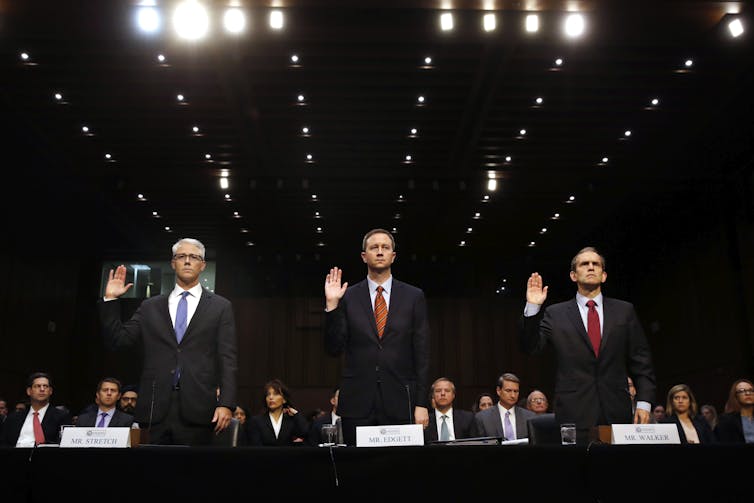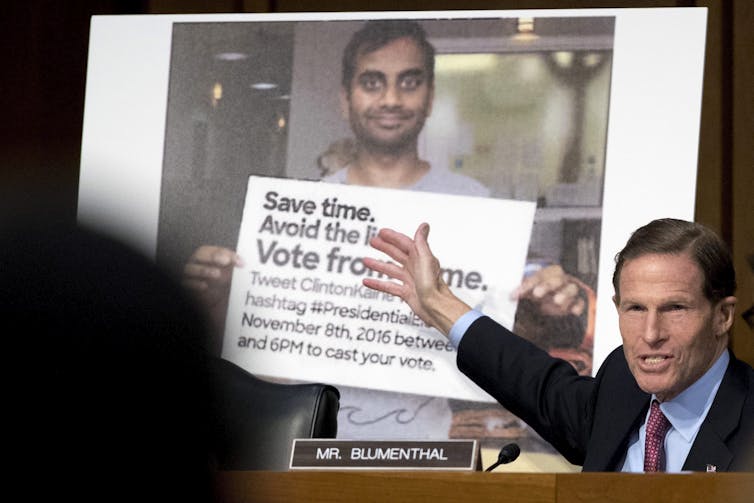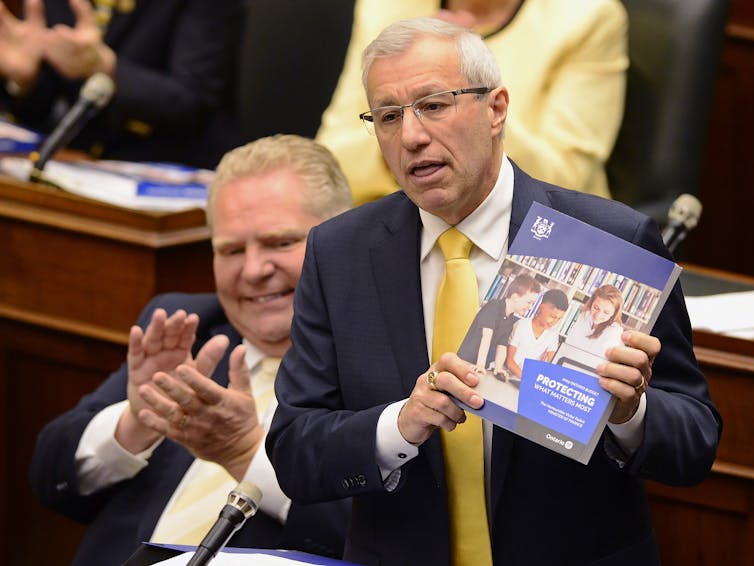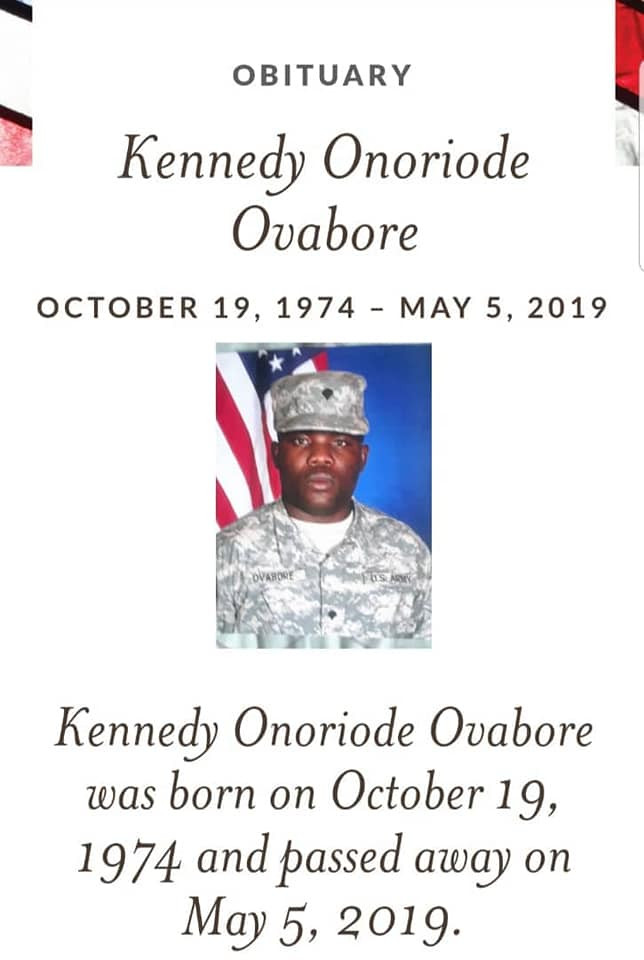
USA & CANADA (901)
Latest News
Regulate social media platforms before it's too late
Saturday, 01 June 2019 14:46 Written by theconversation 
Natasha Tusikov, York University, Canada
In the past week, Silicon Valley has faced renewed calls for greater regulation of social media platforms amid the growing scandal of Russian interference in the 2016 U.S. election.
Given rising awareness of the serious problems inherent within U.S. internet giants’ business models, it’s an opportune time to discuss how best to regulate these companies).
I’m a researcher who studies regulation on the internet. For my book, Chokepoints: Global Private Regulation on the Internet, I’ve interviewed representatives from internet firms and their trade associations, along with policymakers in Canada and the U.S. in regards to what responsibility intermediaries should have for content on their platforms.
Internet intermediaries typically frame their opposition to legislation as protecting freedom of expression, but no right of speech is absolute. This debate is a battle over the control over information: What data should be collected and sold, what content should be permitted online, and who should decide?
Last week the U.S. Senate Intelligence Committee grilled senior legal counsel for Facebook, Google and Twitter about their roles in Russian efforts to influence the U.S. election.

In a startling development, after months of denying and downplaying their responsibility, executives from each of the three companies grudgingly admitted that they had not yet determined the full extent of Russian activities on their platforms.
The executives’ testimony starkly reveals that the companies have few controls on the advertisements and so-called “fake news” that they accept on their platforms.
These candid admissions from the social media giants focus much-needed attention on the serious problems inherent with big intermediaries’ data-intensive business models.
Few safeguards, financial interest in status quo
As the U.S. election scandal shows, big social media platforms not only have few safeguards to prevent the deliberate manipulation of information, but they also have financial interests in maintaining the status quo. Unfettered flows of information and unconstrained advertising revenue are key to their business models. And this model is tremendously profitable.
Facebook’s third-quarter profit was an astounding US$4.7 billion, the vast majority coming from advertisements relating to its 1.3 billion average daily users. Viral stories, whether factual or false, attract clicks and advertising revenue.
Given the seemingly intractable challenges of regulating social media platforms, what can be done? In the United States, three members of Congress have proposed a bipartisan response, the Honest Ads Act, that would require platforms to publish information about their advertisers and maintain a public archive of political advertisements.

This is a step in the right direction, and the Canadian government should consider similar measures in advance of the 2019 federal election. Facebook has already announced a program, the Canadian Election Integrity Initiative, to counter the spread of misinformation that focuses on media literacy and training.
Deliberate misinformation
While these projects appear useful, they likely will do little to address the underlying problem: The bad-faith spread of online misinformation. That’s because the fundamental problem lies with Facebook’s business model. Efforts to constrain the flow of information, especially information that generates advertising revenue, are contrary to their business model.
Facebook CEO Mark Zuckerberg, who initially dismissed claims of Russian interference as “crazy” just after the 2016 U.S. election, said on Nov. 1 that Facebook’s new security features to counter so-called fake news will have a “significant impact our profitability.”
While the big platforms can afford to take a financial hit to restore their reputations and work to get rid of the worst offenders, they can’t fully solve the problem without fundamentally changing how — and with whom — they do business.

In response to what has become a fundamental challenge to the survival of liberal democracy, Facebook, Twitter and Google have all committed to voluntarily implementing measures to address the spread of misinformation and targeting accounts that troll other users with often bigoted, racist content.
Google, for example, is creating a public database of election advertising content that appears on its services. These companies prefer self-regulation to legislation and they’ve lobbied the U.S Federal Election Commission in the past to have online political advertising exempt from disclosure. It’s only the political pressure from the Senate inquiry that is forcing these platforms into action.
Internet companies, algorithms are black boxes
While these developments may seem like attempts by these major companies to be responsible, they amount to Google et al saying: “Trust us to fix the problem we created.”
However, while Google, Facebook and Twitter are all creating algorithms to, in the words of Zuckerberg, “detect bad content and bad actors,” these algorithms operate as so-called “black boxes.” This means that the criteria the algorithms use to make decisions are off-limits to public scrutiny.

Is “trust us” a good enough response, given the problem? With so much at stake, it may be time for a fundamental rethink of how these indispensable 21st century companies are regulated and what they’re allowed to do.
At the very minimum, governments and citizens should reconsider whether the lack of oversight into how these companies shape our speech rights is really in the public interest.
Social media platforms “are an enabler of democracy,” says Margrethe Vestager, the European Union’s Commissioner for Competition, but we’re seeing that “they can also be used against our very basic beliefs in democracy.”
It’s time to start taking that threat to democracy seriously.
Natasha Tusikov, Assistant Professor, Criminology, Department of Social Science, York University, Canada
This article is republished from The Conversation under a Creative Commons license. Read the original article.
Chris Attoh Grilled By U.S Police Over His Cryptic Tweet Hours Before His Wife's Death
Friday, 31 May 2019 20:44 Written by tori.ng
Ancestral languages are essential to Indigenous identities in Canada
Friday, 31 May 2019 01:03 Written by theconversation 
Frank Deer, University of Manitoba
Recent protests against the federal government’s approach to Indigenous language legislation is the latest manifestation of concern regarding the maintenance and flourishing of Indigenous languages and culture.
Although these latest protests are centred around jurisdiction and funding, the fundamental issue for Indigenous peoples is support for an essential part of their identity.
My work in the area of Indigenous education and languages leads me to believe what is core to the concern for language support is the meanings and narratives that are reflected in language.
The breadth of issues and potential initiatives reflected in the 94 Calls to Action of the Truth and Reconciliation Commission of Canada (TRC) cover many areas that are germane to the well-being of Indigenous peoples.
The general aim of reconciliation that has emerged from the activities of the TRC is the development of a new relationship amongst Indigenous and non-Indigenous peoples in Canada. Such a new relationship must acknowledge harms of the past and their impact into present.
It is now clear that the reconciliatory journey must recognize, affirm and follow up on prescriptions for change that aim to rectify many wrongs affecting many areas of the Indigenous peoples’ experience.
One of those areas that is of particular interest to educators at numerous levels is that of language and culture.
Fundamental, valued
The TRC Call to Action 14 called on the federal government to enact an Aboriginal Languages Act and it put forth the necessary premise that Indigenous languages are “a fundamental and valued element of Canadian culture and society.”
Language is not only the capacity that allows us to communicate ideas, but also a complex structure in which meaning is stored.
When one speaks of Indigenous knowledge, one may feel they readily understand the contents of that knowledge when it is said to be “translated” in a lingua franca such as English.
But really what one understands is what linguists may refer to as translation: one understands meaning only in reference to other meanings based on her or his pre-existing words.
This means that the efforts to understand aspects of the Canadian Indigenous experience through Indigenous languages frequently places English as the principal point of reference.
Is there an app for that?
This situation may be understood by considering how Indigenous language apps on smart phones are used. Consider a person who is not a speaker of Kanienke’ha (Mohawk) and wishes to know what the word for “Thursday” is in Kanienke’ha.
One may simply type in the English word “Thursday” into a Kanienke’ha language app and this may reveal the word Okaristiiahne. A person need only engage in this process once for an understanding would emerge that the term Okaristiiahne means Thursday.
In doing so, our hypothetical language app user has put English at the forefront of the process for understanding what the word means. One might say upon completing this episode of app use, “This is the word that means Thursday in my language.”
What is of concern here is meaning. The word Okaristiiahne does not literally mean Thursday. This word may be best understood as meaning “Day of the Eucharist” and reflects the influence that the Catholic faith had and still has in the communities for which Kanienke’ha is used. And, Okaristiiahne is not the only Kanienke’ha word for Thursday. Kaieriaton, which means “the fourth day,” may be used as well, but in my community, not so much.
One may regard this observation of meaning to be trivial — after all, the word Okaristiiahne may be used to represent the day of the week for which the word Thursday is used in English. However, if one accepts the notion that a language stores meaning, then there is a liability for an Indigenous language such as Kanienke’ha when an emphasis on translating particular words in isolation while putting English at the forefront leads one to believe that Okaristiaahne means “Thursday.”
‘Education will get us out’
Understanding meaning in an Indigenous language and how it may provide cultural and historical knowledge is essential to understanding for an Indigenous person’s own cultural identity. It is often said that when a language disappears, so too does a part of a culture.
In leading the work of the TRC, then Commissioner Murray Sinclair frequently said of the problems of Indian residential schools:
“Education is what got us here, and education is what will get us out.”
There may be little doubt that the education of all people is an important part of the trajectory toward reconciliation.
In an effort to support reconciliation in a manner that is responsive to the TRC’s Calls to Action and specifically with those of language and culture, researchers and educators have developed school and community programming such as conversational language lessons or cultural infusions into curricula.
Some tensions in approaches
In numerous communities and jurisdictions Indigenous people have enacted programming and approaches toward supporting Indigenous language and culture that long predate the TRC 2015 report. Yet many Canadians with connection to education (e.g., parents, teachers and school administrators) are still at the beginning of this journey toward supporting Indigenous language and culture in schools.
Research into educational programming on language and culture has revealed, amongst other things, some tensions in approaches with teaching Indigenous languages.
Frequently used classroom resources for language such as language dictionaries and community-developed curricula, as well as resources for supplementary learning through technology (e.g., the smart phone apps) may have undesired consequences for language syntax and development due to the lexicographic imperatives for translation mentioned above.
In regard to language and cultural programming, in my research I have found that although some schools are adequately developing curriculum to teach Indigenous language and culture or knowledge, challenges persist. Perceived limited opportunities in things like hiring Indigenous teaching staff have led to an acknowledgement of the difficulties of offering such programming in urban educational environments.
‘Why am I here?’
The efforts to bring Indigenous knowledge into classrooms has led many to consider what constitutes such knowledge — efforts that some believe may be considered by school staff internally. However, it has become clear that the inclusion of Indigenous peoples with such knowledge in these conversations is essential.
The manner in which cultural meaning may be represented in school programming should not be an afterthought.
We should ask ourselves: What can we learn of Indigenous people through enhanced programming? What narratives can we acquire by exploring Indigenous languages? How may our relationships be improved by recognizing and affirming the cultural elements and mores of Indigenous people?
It may also be imperative to consider what the aforementioned TRC Commissioner Murray Sinclair stated when he called for all people committed to reconciliation to ask ourselves as a normal matter of course in the reconciliatory journey: Where do I come from? Where am I going? Why am I here? Who am I?![]()
Frank Deer, Associate professor and Canada Research Chair, Faculty of Education, University of Manitoba
This article is republished from The Conversation under a Creative Commons license. Read the original article.
The Ontario government's shameful snub of affordable housing
Wednesday, 29 May 2019 09:35 Written by theconversation 
Daniel Del Gobbo, University of Toronto
Ontario Premier Doug Ford’s new housing policy offers us a lot of things, but what it fails to mention might hurt vulnerable Canadians the most.
Prime Minister Justin Trudeau and Toronto Mayor John Tory recently announced a $1.3 billion federal investment in the Toronto Community Housing Corporation, the city’s largest affordable housing provider. According to the federal government, the $1.3 billion will go toward renovating some 58,000 housing units across 1,500 buildings. It is the largest federal transfer of housing funds to a municipality in the country’s history.
The investment follows on the heels of Trudeau’s announcement of the federal government’s first-ever National Housing Strategy in 2017. Trudeau pledged to spend $40 billion to address the problems of inadequate housing and chronic homelessness in Canada over a 10-year period.
For his part, Ontario Premier Doug Ford recently pledged $1 billion to repair Ontario’s affordable housing stock and streamline the application process as part of the provincial government’s Community Housing Renewal Strategy. Exactly how much Toronto Community Housing will receive is unclear.
Ontario’s recent budget is silent on the issue as well. It doesn’t mention Toronto Community Housing once. Instead, the budget seems focused on boosting the overall housing supply while cutting access to social programs like affordable housing, income support and homelessness prevention by $550 million per year. Funding for the Ontario Ministry of Municipal Housing and Affairs has been cut by 25 per cent overall.

When Trudeau first announced the National Housing Strategy, he famously declared that “housing rights are human rights.” The federal government’s investment in Toronto Community Housing is an important step toward fulfilling this promise. Now it’s the province’s turn to step up as well.
More than just a landlord
Affordable housing providers in Canada are facing an identity crisis.
Some critics have argued that Toronto Community Housing should behave like any other landlord. They argue its main job should be to collect rents, enforce leases and promptly evict tenants who fail to comply with the rules, regardless of their personal circumstances.
Toronto Community Housing has faced accusations of wasteful spending in the past. Residents and taxpayers should demand a crackdown, the critics say. A Toronto Sun columnist suggested that it should behave like a private landlord: “Clearly, private landlords are in business to make money. (Toronto Community Housing) officials really couldn’t care less.”
Ford would seem to agree. One of the hallmarks of Ontario’s new housing policy is a change to the application rules. Toronto Community Housing would be empowered to turn away prospective tenants who were previously evicted for criminal activity. Apparently Tory has campaigned for the rule change as well.
Toronto Community Housing is home to 110,000 people, including 30,000 youth and children and 20,000 seniors. The vast majority of residents live below the poverty line. Nearly 60 per cent of them are women, and one third of them self-identify as either having a disability or living with mental health challenges. For many people, eviction from Toronto Community Housing would mean they have nowhere else to live. Homelessness, poverty rates, and mental health are closely interrelated in Canada.
Properly understood in this light, Toronto Community Housing is more than just a private landlord. And the federal government’s investment is more than just a commitment to repairing bricks and mortar. Affordable housing is one of the planks of a more fair and just society. Ontario’s new housing policy fails to recognize this.
Affordable housing matters
Since the federal and provincial governments downloaded responsibility for affordable housing to municipalities in the late 1990s and early 2000s, Toronto Community Housing has lacked stable, long-term sources of funding and support from every level of government.
As a result, Toronto Community Housing faces a capital repairs shortfall of $2.6 billion over the next 10 years since it inherited a large stock of buildings without the resources to maintain them. The city’s affordable housing stock is literally crumbling.
The waiting list for a rent-subsidized unit in Toronto Community Housing is currently tens of thousands of families long. Most applicants can expect to wait seven years or more for a bachelor unit and longer than 10 years for a larger unit. The waiting list includes people experiencing homelessness, survivors of intimate partner violence and human trafficking and terminally ill people with fewer than two years to live.
A combination of factors has meant that Toronto Community Housing has failed to provide shelter for many people who need it most. Research shows that racialized women, Indigenous peoples, immigrant populations, and persons with disabilities, among others, are most likely to face housing discrimination in Canada. Homelessness is a barrier to the social advancement of historically marginalized groups in our society, particularly those who fall at the intersection of multiple systems of oppression and can face the greatest challenges in obtaining safe and adequate housing.
Police services are not equipped to contend with the complex issues facing people who experience poverty and homelessness. The criminal justice system is increasingly exclusionary of people with mental health challenges, among others, who comprise a large part of Toronto Community Housing’s population. Shifts in public policy surrounding poverty, homelessness and mental health have resulted in the criminalization of homelessness in Canada.
Read more: A taxing problem: Canadian cities desperately need new sources of revenue
Faced with this reality, the federal government’s recognition that “housing rights are human rights” is a commitment to addressing the city’s increasingly competitive and inaccessible housing market. It’s a commitment to improving the safety, housing conditions and quality of life for thousands of city residents. It’s a commitment to empowering some of the most vulnerable members of our society by increasing their access to vital social services like job placement assistance and local community-building initiatives. Affordable housing providers can help to provide these services.
The provincial government’s new housing policy, on the other hand, fails to reflect the same values as the federal government’s plan.
Ontario should have allocated more for affordable housing in its budget, not less. To match the federal government’s investment, the province should have earmarked funds for Toronto Community Housing specifically. Mental health supports and other social programs aimed at homelessness prevention should have been made a top priority throughout. And the province should have recognized that housing rights are human rights, not privileges. This means they should extend to everyone. Prospective tenants who were previously evicted for criminal activity should not be denied access to affordable housing in the future.
Building for the future
Affordable housing providers should be funded and supported toward the goal of breaking the cycle of poverty in Canada. The federal government’s investment in Toronto Community Housing is a good start, but more funding and support from every level of government is needed to fulfil Trudeau’s promise that “housing rights are human rights” across the country.
At the same time, affordable housing providers should be held more accountable in meeting their human rights mandate. The National Housing Strategy is not a blank cheque. The promise of the policy requires that we spend residents and taxpayers’ money in socially responsible ways.
Canadians should invest in affordable housing. It’s a commitment to lifting the most vulnerable members of our society from the ground up — and lifting our entire country up in the process.
![]()
Daniel Del Gobbo, Adjunct Professor at Osgoode Hall Law School and SJD Candidate, University of Toronto
This article is republished from The Conversation under a Creative Commons license. Read the original article.
Popular News
Banking while Black: The business of exclusion
Wednesday, 29 May 2019 02:04 Written by theconversation 
Caroline Shenaz Hossein, York University, Canada
Black Canadians are twice as likely as those in the overall Canadian population to have low incomes, get shot, be unemployed and to encounter systemic bias that interferes with equal access to goods and services. The financial world is no exception.
Black people have a hard time getting access to money to borrow, or are completely shut out. They often encounter horrid service when they do go into a bank. Remember Frantz St. Fleur, a Haitian-Canadian, whose Toronto bank called the police while he was trying to deposit a $9,000 cheque? He was profiled by bankers who called the police, who promptly arrested him. Both assumed his cheque was fraudulent. It wasn’t.
More recently, a Nigerian-Canadian entrepreneur reached out to me to share her story. Her bank account was frozen because the bankers thought she had too much activity going in and out of her account. She’s a businesswoman. It should be no surprise to her bank that she makes a lot of transactions. It’s no wonder Black people want to redo the way banking works.
My current research examines business exclusion for racialized Canadians and how they co-opt resources to create vibrant local economies.
Progressive non-profits such as ACORN don’t get it. They speak of financial alternatives but they do not give any solutions. Sure, they speak about credit unions, but credit unions are too scarce to be a reasonable choice and aren’t often located in poor neighbourhoods. Like commercial banks, they also deal with their own cultural diversity issues.
A look at the Meridian credit union or the Alterna credit union in Toronto’s posh east end says a lot. They are situated in areas that are convenient for white people, and the general reputation of credit unions in Canada seems to be an old white man’s bank. They do not look like they are working to attract racialized clients.
An alternative financial service institution is one that provides outside help and one that promises to do things differently from formal banks. Up to now, the fixation by progressives has been on the big bad guys like Cash for Money, Money Mart and payday lenders.
But we also need to be looking at banking alternatives that actually help people. For example, Montreal has a group called Montreal Community Loan Fund (ACEM). It’s a community bank that started back in the 1980s to democratize finance and to create an inclusive business environment.
Today, ACEM is an organization supporting thousands of small business people, especially immigrant-owned businesses that cannot access credit, even from the guichet Desjardins, the supposed good guys. This was a credit union that started informally to help the French-speaking Catholic minority in rural Quebec in the 1900s. This original intent to put banking within reach of the excluded is important for Canada. Somehow, the modern-day credit unions have turned their back on racialized minorities who feel cut off from formal conventional banks.
‘Banker Ladies’
There Is Another Real Alternative (TIARA) in the form of mutual aid groups and co-operatives. Hundreds if not thousands of hyphenated Canadians engage in mutual aid groups or peer-to-peer banking institutions, officially known in academic circles as rotating savings and credit associations (ROSCAs).
ROSCAs are mutual aid groups. They’re informal institutions where members self-organize, decide on the rules and make regular fixed contributions to a fund that is given in whole or in part to each member in turn.
ROSCAs are an important way of organizing people and resources locally — and co-operatively. Although ROSCAs is an academic term, it is the official name for these systems that are very much localized.
ROSCAs are known worldwide in various cultural vernaculars like “Susu” in Ghana, St. Vincent, Trinidad and Tobago, Grenada; “Esusu” in Nigeria; “Ayuuto” and “Hagbad” in Somalia; “Equub” in Ethiopia and Eritrea; “Box-hand” in Guyana and Antigua; “Partner” in Jamaica; “Restourne” in DR Congo and “Sol” in Haiti. These many names depict the same phenomenon — people sharing money through co-operation. It is also about self-help and love — neighbours helping each other.
Black Canadians have contributed enormously to what we know about Canada’s social economy because of their innovation in these ROSCAs. Racialized Canadian women come together to organize ROSCAs in a voluntary manner in an effort to meet their own social and economic needs and the needs of others when they move to big cities like New York City, Miami, Toronto and Montreal.
These women are known as the “Banker Ladies.” This short history of Black women creating banking alternatives is revealing in that Black people in the Americas contribute profoundly to co-operative money traditions.
The co-operative tradition has been active in Canada for a very long time, yet it’s often associated with old white men and not Black communities. However, many people of colour who move here have a strong understanding of co-operative economics from their homelands. We need to change this “old white man” perception because the growth of co-operatives will depend on racialized Canadians in the future.
Economic self-help
In Canada the women who organize ROSCAs are stirring things up. The Harriet Tubman Institute for Research on Africa and its Diaspora at York University is carrying out a federally funded project, “African Origins in the Social Economy,” and a provincially supported project called “Social Innovations” focused on collecting empirical data from Canadian-based financial and business innovations in order to understand social enterprises, mutual aid and economic co-operation among people of colour, especially women.
So far the study explains that ROSCAs are the preferred institution where these women bank because of the business of exclusion in commercial banks. Sure these women have bank accounts at TD, CIBC and BMO, but they don’t use them much except to get a salary deposit. This is what University of Winnipeg’s Jerry Buckland refers to as the under-banked. ROSCAs are a place to do business and to form friendships and bonds.
Formal commercial banks and credit unions to some extent have not been kind to Black people. So in Canada’s financial centres, women are banking in their own way to make sure their money is shared by others who cannot get any help at a regular bank.
This is not a new practice, but an ancient and well-respected one coming from Africa as a way for people to pool money and then rotate it among each others, usually interest-free. ROSCAs build businesses and send children to school. Almost equally important, they are helping women entrepreneurs form lasting bonds.
Canada’s Banker Ladies are a perfect example of self-help, economic co-operation, love and the sharing economy because what they do is ensure the betterment of society. Bankers should know more about this special kind of mutual aid led by Black women — and learn a thing or two about humanity.![]()
Caroline Shenaz Hossein, Associate Professor of Business & Society, York University, Canada
This article is republished from The Conversation under a Creative Commons license. Read the original article.
Canada’s legalization of weed edibles is another global social experiment
Saturday, 25 May 2019 05:12 Written by theconversation 
Sylvain Charlebois, Dalhousie University and Janet Music, Dalhousie University
This October, cannabis-infused edibles will be fully legal on the Canadian market.
Despite claims that broader cannabis legalization would change the social, economic and cultural fabric of the country, there is little evidence to suggest that this is the case.
The government itself claimed initially that its primary intent was to legalize cannabis without normalizing it. That’s exactly what it delivered. Allowing Canadians to have access to legal cannabis while keeping the social stigma against routine marijuana use alive was arguably the result the government was looking for.
The rollout of commercially available dried cannabis flower was relatively uneventful, though shortages and high price points still allow the black market to thrive. Beyond the hoopla, nothing has significantly changed. As illegal vendors continue to prosper, the social stigma has remained, evidenced by a recent study by Dalhousie University.
This recent study released in May suggests that Canadians remain supportive of legalized cannabis, but their enthusiasm for legalized cannabis and edibles has dropped in recent months.
Now, edible cannabis policy is in the spotlight as Western countries around the globe look to capitalize on this frontier market. Canada is once again acting as a global social experiment, demonstrating to international political and business communities best and worst market practices.
Edibles are big business
Generally, consumers remain open to the edible cannabis market. In American states where cannabis is legal for recreational use, edibles account for 12 to 15 per cent of the market. In Canada, sales of cannabis-infused edible products are projected to reach $4.1 billion by 2022.
While the edible market offers opportunities for prosperity for cannabis producers and retailers, there remain challenges ahead for those looking to enter this market. Negative media portrayals have raised concerns among consumers who have yet to sample edibles. Cannabis ingestion among children presents a serious public health issue, expected to increase with the advent of legally available edible products, such as gummy candies and baked goods that appeal to kids.
Some consumers who currently want to integrate cannabis-infused food into their diets without turning to the black market for edibles — and without increasing their sugar intake — cook with cannabis. But that carries great risks that aren’t being given any consideration by regulators.
The effects of cannabis-infused edibles vary greatly and are dependant on dose, gender, weight and metabolism. For novice users, edibles present a chance of accidentally consuming too much as they experiment in getting the dosage right for their own personal circumstances.
There are multiple social media how-to videos on baking and cooking with cannabis, but these aren’t monitored for the accuracy of the information provided, further leaving consumers open to cannabis-related mishaps.
‘Walking a fine line’
And so the government is walking a fine line between public safety and promoting the sale of cannabis as a recreational intoxicant, particularly when it comes to edibles.
As uncertainty grows among consumers about edibles, how much of it is fed by public service messaging is unclear. Certainly, mixed messaging does little to alleviate confusion. Health Canada guidelines and recent media coverage may be contributing to an increase in uncertainty about experimenting with edibles. Health Canada’s uncompromising regulatory framework is making many feel that edibles are welcomed in Canada, to a certain degree.
While public safety campaigns target sober driving and address child safety regarding cannabis-infused candy, businesses looking to market cannabis must adhere to strict guidelines that limit the scope and reach of what they can promote.
The regulations set by the federal government surrounding the legal sale of cannabis edibles are confusing to retailers. There are of course mandatory regulatory requirements regarding testing and dosage. Labelling guidelines will be the same as those for food and pharmaceuticals. However, the low THC limit of 10 milligrams per edible, and the lack of clarity around how much THC is allowable per package, has the potential to cut into a business’ bottom line.
The Dalhousie survey revealed how illiterate Canadians are about cannabinoids. Only 31 per cent of respondents were able to detect the non-psychoactive, therapeutic nature of CBD. CBD is of great interest to the food industry, but few understand it. More public education is needed.
Overall, the legalization of cannabis in October 2018 allowed for new markets in cannabis distribution. Adding edibles to the mix this fall isn’t likely to fuel broad cultural changes in the way Canadians imbibe in the short term. Canadians, by and large, have accepted cannabis, but policies are preventing businesses from catching up and leading the rest of the world in cannabis production and distribution. So far, that’s a missed opportunity.
Sylvain Charlebois, Director, Agri-Food Analytics Lab, Professor in Food Distribution and Policy, Dalhousie University and Janet Music, Research Associate at Agri-Food Analytics Lab from the School of Information Management, Dalhousie University
This article is republished from The Conversation under a Creative Commons license. Read the original article.
The Trump administration just made its first move in a clampdown on US visas for Nigerians
Saturday, 25 May 2019 01:16 Written by qz.com/africa/Nigeria accounted for over 25% of non-immigrant visas issued to Africans in 2018 alone—but that may be set to change.
The United States embassy has announced an immediate indefinite suspension of interview waivers for visa renewals for applicants in Nigeria. Known as “drop-box,” the interview waiver process allowed Nigerian applicants who met certain eligibility criteria to renew their visas by submitting their passports and supporting documents for review without going through a new in-person interview each time.
The process mainly targeted regular visitors to the US who have a history of applying for and receiving visas. One of the requirements for the interview waiver was for an applicant to have previously received a two-year visa.
With the new waiver suspension, all applicants—first time and recurring—will now be required to appear for in-person interviews at US embassies in Nigeria.
A likely consequence could be a drop-off in the number of non-immigrant visas issued to Nigerians. Compared to the drop-box process which resulted in a high rate of visa renewals for regular visitors, in-person interviews will likely result in increased scrutiny, a much longer process and, by extension, fewer visas issued.
There have already been local reports of visa drop-box submissions taking much longer to process over the past year, hinting at increasing scrutiny. Increasingly, drop-box applications have also been returned unapproved with requests for in-person interviews.
The possibility of a tougher outlook for applicants is noted in the US embassy’s statement as it says one of the reasons it has suspended the interview waiver is to “promote legitimate travel.” It’s rhetoric that is consistent with the Trump administration’s stance on immigration.
The proposed measures included reducing visa validity periods, making it tougher for citizens from countries like Nigeria to receive visas at all and the long-term possibility of outright bans.








